Scent Marking at Deer Scrapes – Whitetail Video
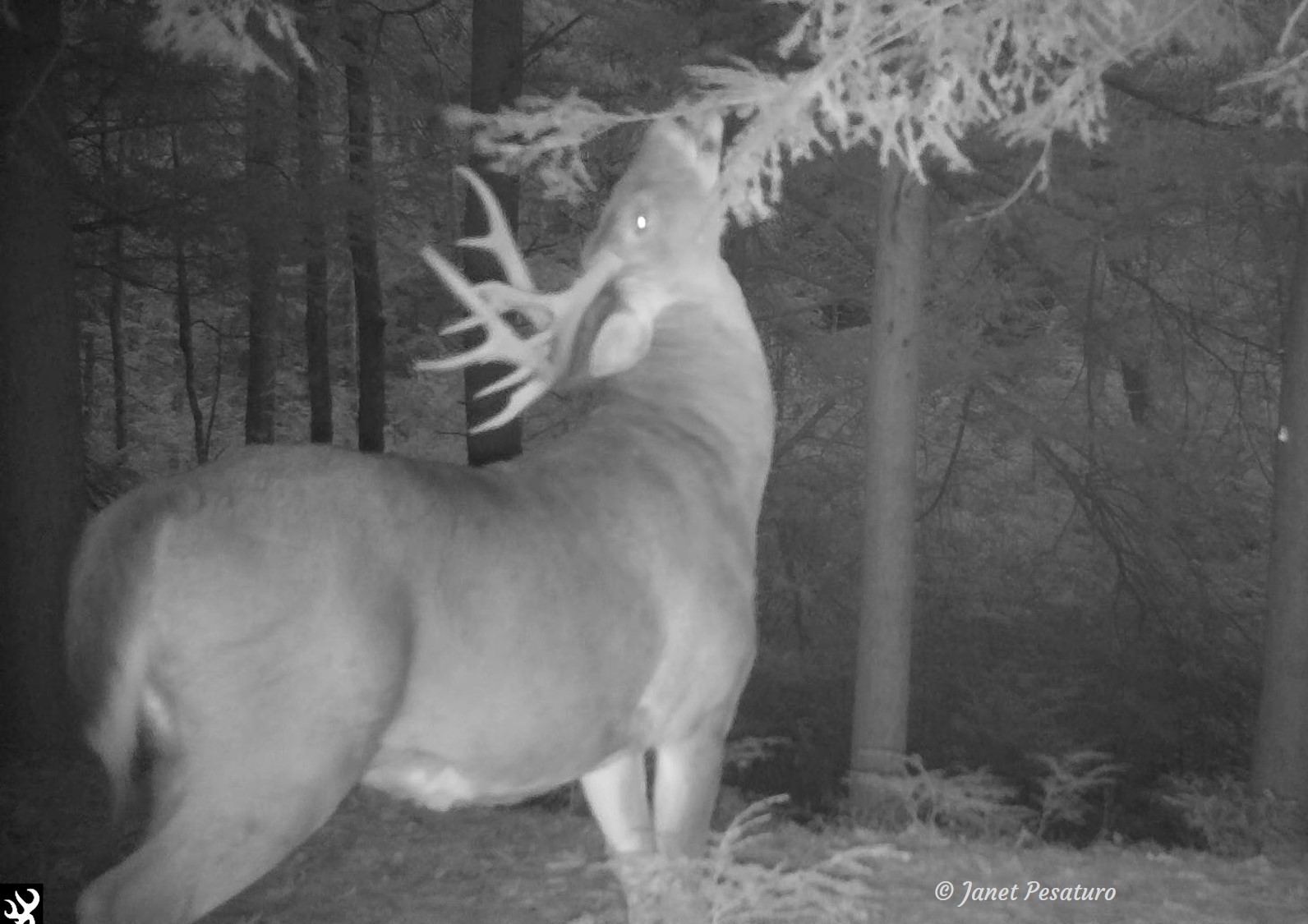
Like many other mammals, white-tailed deer use scent to communicate. They deposit secretions from glands on their heads, on their legs, and between their toes, and all of these are used in scent marking at deer scrapes, important communication spots during the fall rut. A white-tailed deer scrape consists of two components: a thin branch that he works with his face and mouth, and a spot on the ground beneath the branch where he scrapes. But exactly what he’s doing at a scrape is more complex than that, and we’ll take a detailed look at it. I got some nice trail cam footage of scrape activity last fall in Massachusetts, and we’ll use that as a visual aid. So watch the video below and then, for a deeper understanding, read about the two components of the scrape and the glands used by the deer for marking.
The licking branch
The thin branch above the scrape is often called a “licking branch” but deer don’t just lick it. In fact the buck in this video doesn’t do much licking. Instead, he mostly rubs it with his face and head, and in doing so he deposits scent from his pre-orbital (lachrymal) glands located at the inner corners of his eyes, and from his forehead glands located between his antlers. If he does mouth or lick the branch, he may also deposit secretions from his salivary glands, and it’s possible that his saliva also leaves behind smelly information useful to other deer.
The licking branch is usually 3-5 feet above the patch of scraped earth, and it’s usually thin and wispy. In central Massachusetts, where I spend a lot of time tracking, deer seem to prefer hemlock for licking branches, and hemlock is used in the video in this post. I wonder if it’s because the rather soft and fluffy evergreen twigs hold scent better than the naked autumn twigs of deciduous trees, but the fact is that deer will use any species. Location seems to more important than anything else: It needs to be about 3-5 feet above a suitable spot for scraping.
The scraped area
The patch of scraped earth itself is a 2-3 foot long oval to roundish area, typically denuded of leaf litter. This is where the buck paws with his front hooves, leaving scent from his interdigital glands. He also leaves scent from his urine and tarsal glands in a process called “rub-urination”.
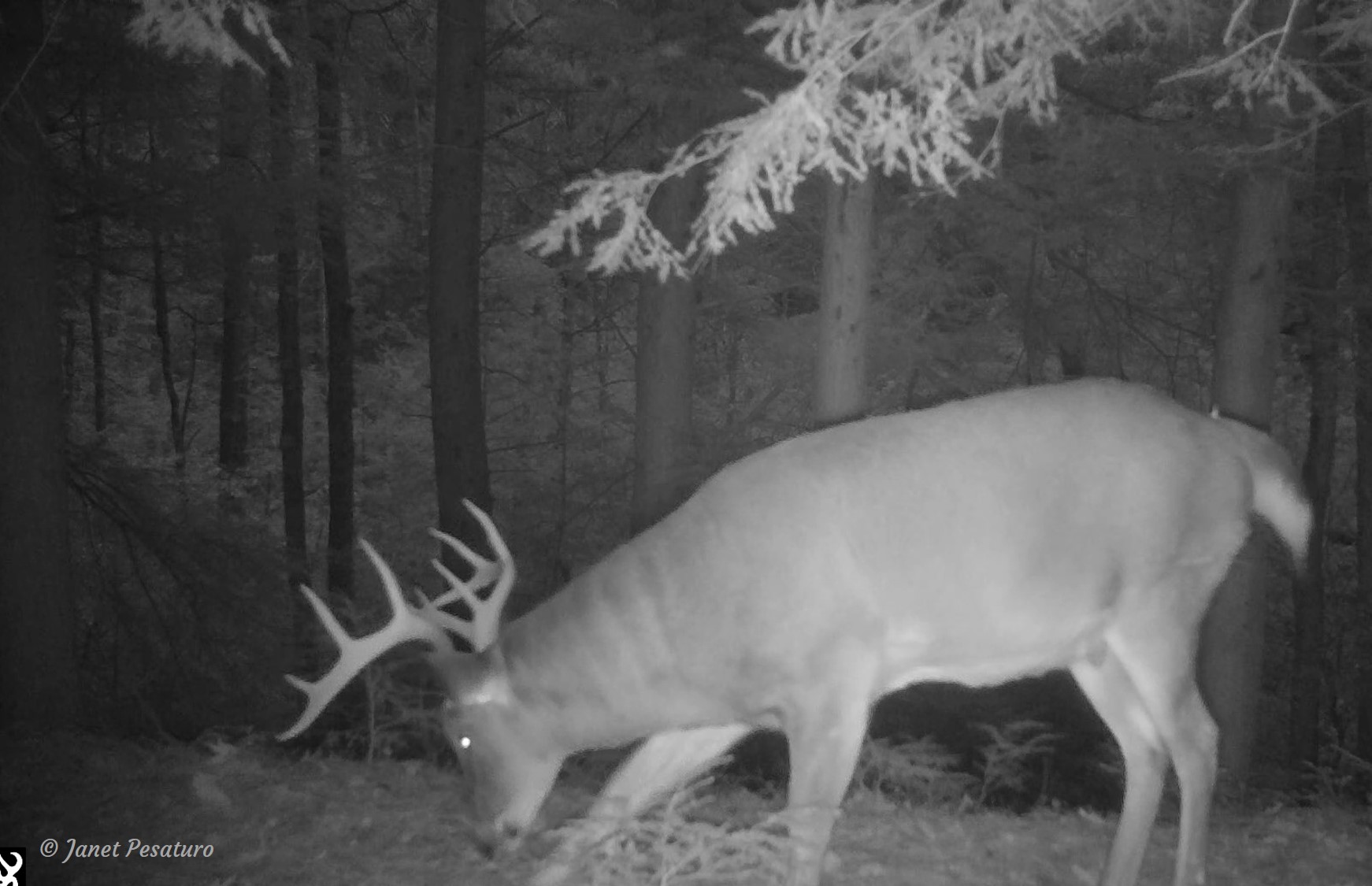
Each tarsal gland is located on the inside surface of a hind leg at the “hock” (see photo). It consists of a tuft of stiff hairs and sebaceous glands that produce an oily substance. When a buck urinates at a scrape, he squeezes his hind legs together so that some of the urine streams over the tarsal glands and mixes with the oily glandular secretion so that both roll down his legs and into the scraped earth. The combination of bodily fluids and consequent bacterial growth result in a strong odor which presumably carries important information to other deer.
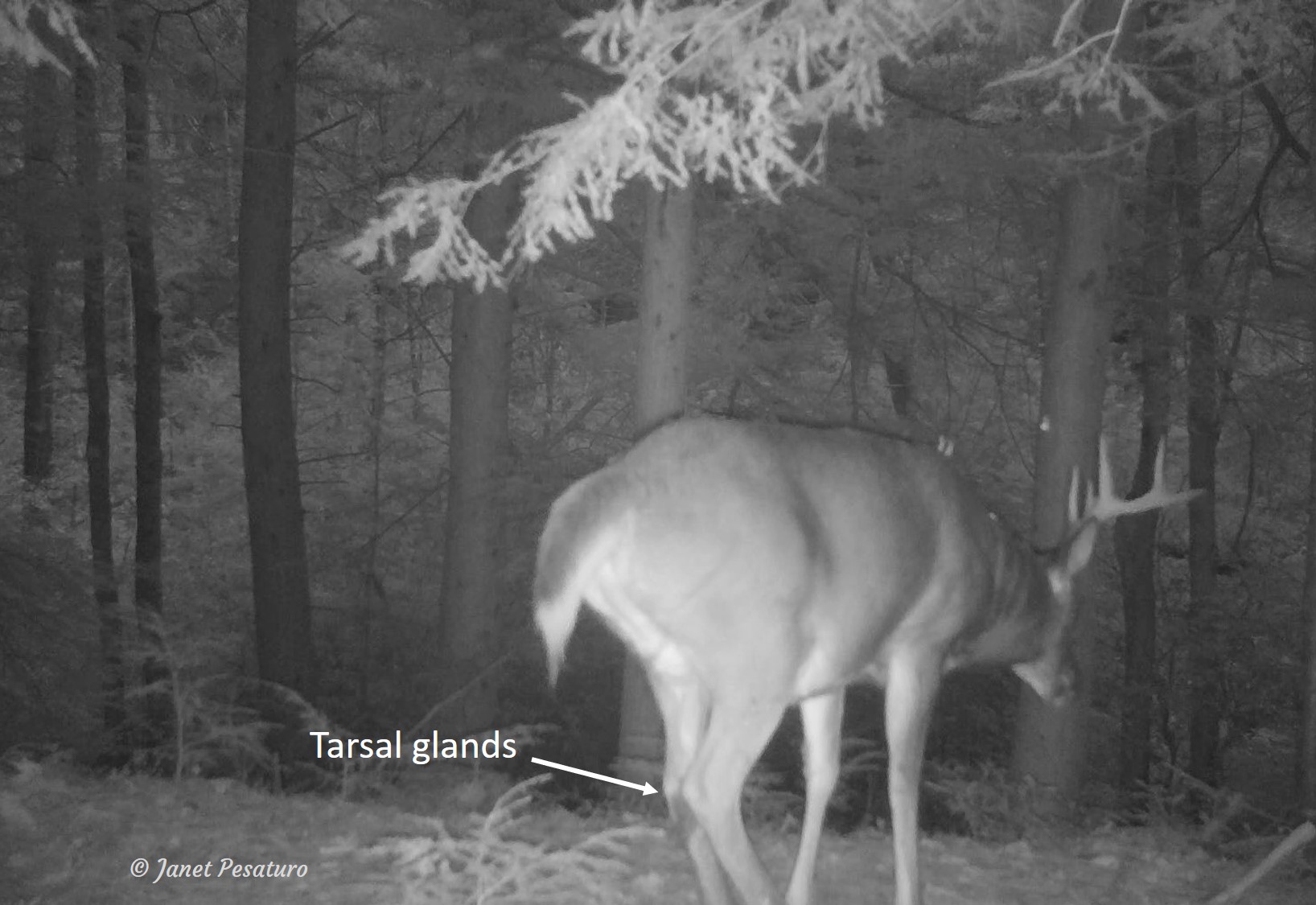
Importance of deer scrapes
The busiest scrapes are used by multiple bucks and does, especially during the rut. Bucks do most of the scent marking, and probably both sexes use them to process chemical cues. Bucks may use them to reinforce the dominance hierarchy, and females likely use them to evaluate fitness of the bucks.
I’ve often wondered about the importance of does scent marking at deer scrapes. Many does do “work the licking branch” but not as vigorously as the bucks. I believe does are mostly licking and sniffing to take in the chemical signals left by bucks, but her saliva carries her scent, which may be useful information to other deer. So far, I’ve not seen a doe paw or urinate at a scrape.
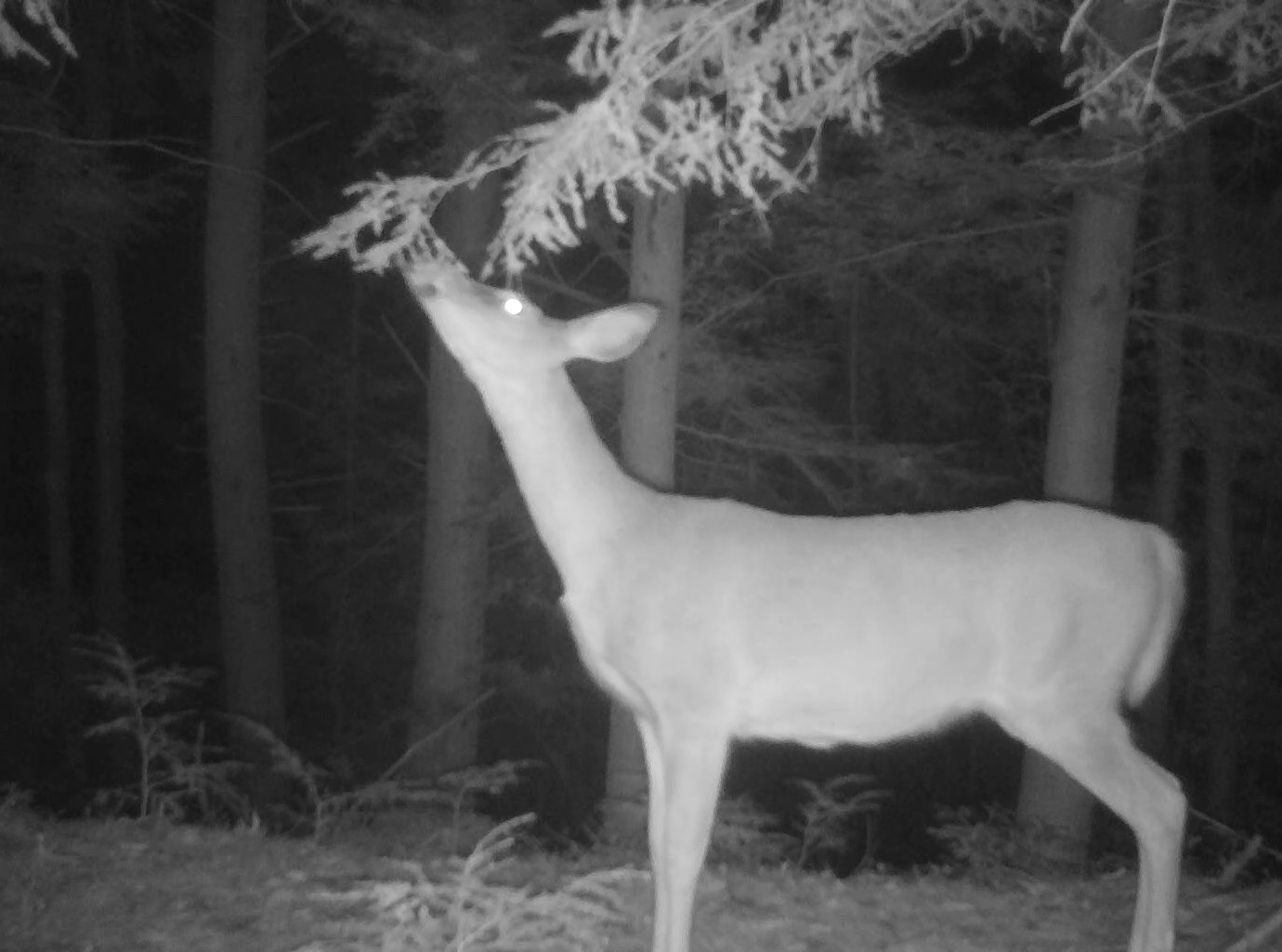
Observing scent marking at deer scrapes with camera traps
To target a deer scrape with a trail camera you need to know how to find them and, like anything else, scrapes will suddenly emerge from the landscape once you develop a search image for them. Scrapes are so common wherever white-tailed deer abound that you’ll wonder how you never noticed them before. When you see a 2-3 foot long patch of scraped earth, look above it for a suitable overhanging branch, and look for deer tracks in the scrape as well. Eventually you may pride yourself at finding subtle scrapes outside of the rutting season, but these scrapes and that time are not the best for camera trapping.
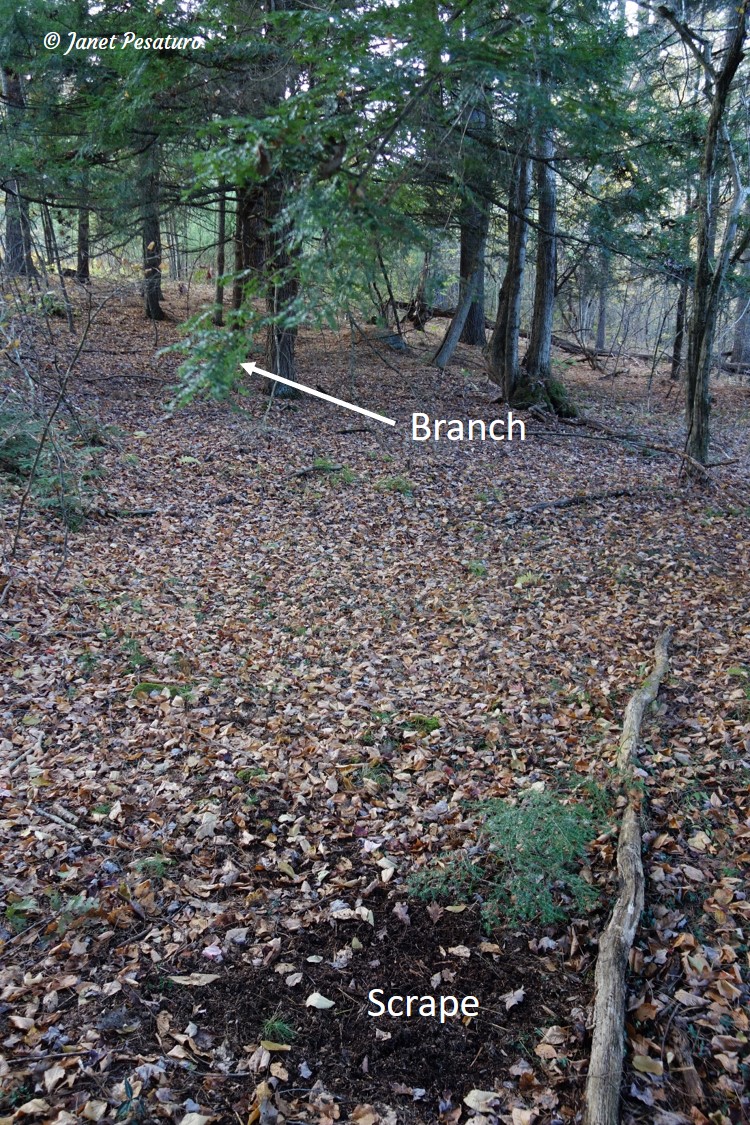
For best results, search for scrapes in fall, and look for the most obvious ones, preferably on a well-used deer run. These are the scrapes that see a lot of activity, and fall is when the behavior peaks. These are the scrapes that get action from multiple bucks, and sometimes attract other species as well. See my post White-tailed Deer Scrape Action for a video showing where coyote, raccoon, bobcat, and moose all appeared at the scrape.
When targeting a scrape with a trail camera, take care to station it far enough back to frame a buck’s entire body. My camera was a bit too close, but there wasn’t a better spot for mounting.
Sources and Further Reading
- Elbroch. E. and K. Rinehart. Behavior of North American Mammals. Boston and New York: Houghton Mifflin Harcort, 2011.
- Scent Glands 101: Making Sense of Whitetails’ Scent Glands

Nice article ! It wouldn’t take very much effort for a camera trapper to capture a respectable whitetail buck using this information. I have found on average that Nov6th tends to be the height of the rut activity in MA.back off a couple of weeks and start looking for scrapes. They are fairly easy to find
.
Thanks – In central MA I’ve been seeing the peak in October. I found this scrape and stationed the camera on September 28th. By then it was obviously being used and multiple bucks used it through October. No bucks used it in November, but the does continued to check out the scrape. At another scrape where I had a camera, activity actually began in early September. But, in early November, a moose ate the licking branch so I never got to see how late in the season bucks would use the scrape.
Great article!! I’m archiving this one
Thank you, Ray, that’s quite an honor coming from you.
Seeing what looked like an active scrape this New Years surprised me, and I am pleased with myself that I trained a camera on it, and really pleased that I got a video of a buck working it. Yesterday I aimed that camera somewhat better and added a second camera at a different angle. A doe has visited too, but just sniffed.
Excellent! Please let us know if the action continues at that scrape through January. With that buck working the scrape, I wonder if there’s a doe in estrus in the area who’s sending chemical signals that keep the buck going.
Great article and video as always – Thanks for sharing